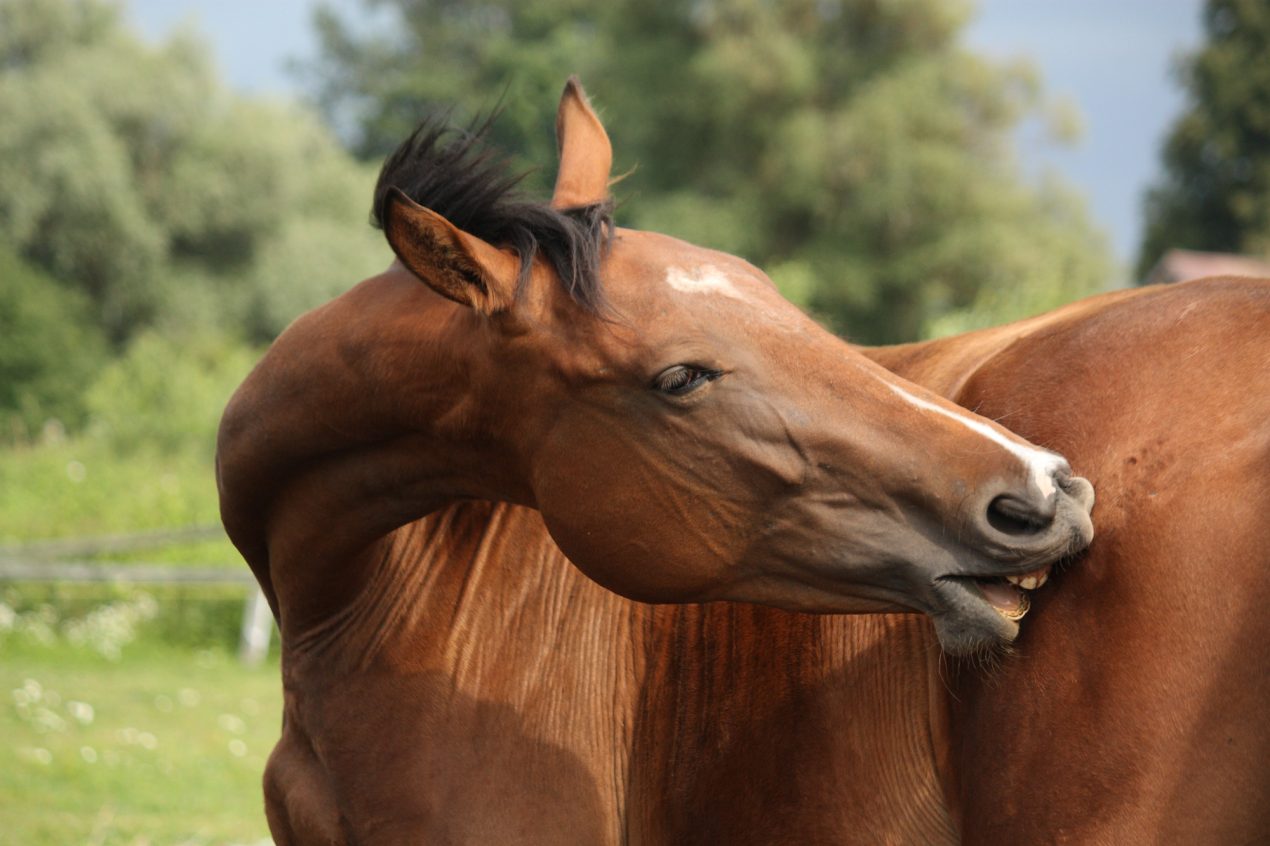Allergies In Horses.

There is not a huge amount known about allergy testing in horses and therefore it is still essential to take the findings on an allergy report carefully rather than taking them at face value as this could make finding a suitable feed for your horse very difficult.
A study published in 2016 (Dupont et al. 2016) investigated the reliability of allergy testing in horses and found that the occurrence of food allergies in horses remains unclear. Serum IgE based tests are currently considered unreliable as no IgE-mediated test for food allergy in horses has been clinically validated. This study showed that tests for equine food allergy did not produce consistent results and as high IgE serum concentrations are found in healthy horses, the results are often questionable.
When diagnosing allergies, blood tests will look for both IgG and IgE antibodies. It is important to remember that only IgE antibodies are an indication of an allergy, however it is common for people to be told they, or their animal, has an allergy if positive IgG antibodies are seen. Healthy people/animals with no allergies will show positive IgG antibodies to some substances as these antibodies are raised when exposed to a food, rather than as an adverse reaction to that food. Healthy immune systems produce IgG antibodies in the presence of any food/substance so positive IgG tests to a food shows it is currently, or recently, in the diet.
Horses with suspected food allergies are often given unbalanced diets in an effort to avoid the suspected allergen because the presumed allergy leads to the elimination of a range of commonly used feed ingredients. An unbalanced diet can be detrimental to a horse’s health and wellbeing. Food allergies in horses are actually quite uncommon. Allergies are usually caused by environmental factors such as plants, trees, or bedding. If allergies are suspected, the best thing to do in order to come to a conclusion as to whether food is an issue is an elimination diet as this will point you in the right direction as to what may actually be causing the issue.
An elimination diet can be done in a number of ways. The most important thing is to try and change as few factors as possible at one time to narrow down the cause. For example, keeping everything else the same and just changing their bedding. If the reaction is suspected to come from a new feed, the first thing to try would be to remove the new feed from their ration, wait until the reaction has cleared, and then gradually reintroduce the feed again to see if the reaction occurs once again. If it does not, then it is likely there was another factor involved and it was just a coincidence. If it does occur then it would be a case of trying to narrow down the specific ingredients in the feed whilst trying to keep some the same, for example removing cereals from the ration but keeping other commonly used ingredients in there.
The study authors concluded that inconsistent test results are misleading and “could lead to unnecessary or inappropriate changes in food management when eliminating the presumed food allergens from the daily ration and that allergy testing in humans and small animals has also been shown to be unreliable”. That doesn’t mean food allergies don’t exist in horses it just means that no cases have been described in a scientific setting and that blood tests don’t seem to be a reliable indicator of their existence.
Supplementing horses with skin irritations with omega 3 fatty acids can be beneficial. It has been shown that diets high in omega 3 fatty acids can help to increase the elasticity of the skin cells which is of great benefit for horses that are suffering from forms of skin irritation. KER’s EO.3™ is a unique source of omega-3 fatty acids, derived from marine sources that can help maintain an optimal omega-3: omega-6 fatty acid ratio in equine diets. These essential fatty acids cannot be made by the horse and therefore have to be supplied in the ration. EO.3 is a more readily available source of omega-3’s to the horse than linseed or vegetable oil is and is therefore more effective. The form of omega 3 oil that is in vegetable oil has to be converted in the horse's body into the form that can be used. The omega 3 oil that is in fish oil is already in the form the horse can use so does not need to be converted, making it more bio-available.
Quick Feed Finder
Use our quick and easy feed finder as a guide to select the right feed for your horse or pony.
Feed Advice Form
Complete our online form to receive a detailed nutritional plan for your horse or pony from one of our registered nutritionists.












